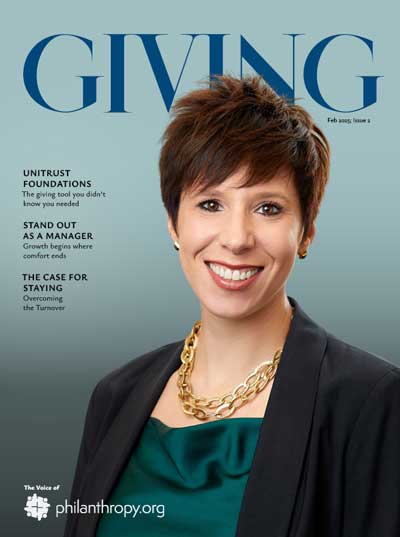Why It Matters
Whether you are an individual or a nonprofit, you have come to the right place.
Philanthropy plays a vital role in our society, and always has. Whether it’s time, money, or other resources, the act of giving helps to create positive change in areas like education, health, the environment, and social justice. The very word “philanthropy” can be traced to the ancient Greeks; the Merriam-Webster Dictionary says the word’s root can “literally be translated as ‘loving people.’ “
When individuals, companies, and communities come together to help others, they can fill the gaps that governments and businesses sometimes miss. Philanthropy turns hopes, dreams and empathy into real action. Its full potential, however, can only be reached when it’s embraced as a global effort.
Creating Long-Term Change
One of the main reasons global philanthropy is so important is that it helps to create long-term change rather than just quick fixes. It aims to address the root causes of problems—such as poverty, lack of education, or gender inequality—and support lasting solutions.
Philanthropic organizations have often led projects such as providing clean drinking water in remote areas, advancing medical research, and empowering women and marginalized communities. These efforts build a foundation for people to become self-sufficient, helping entire regions improve over time.
Mutual Benefits of Giving
Philanthropy doesn’t just help the people who receive support, though. It also benefits those who give. The feeling of knowing you’ve helped someone or contributed to a better future for others is incredibly rewarding. This mutual benefit creates a cycle of empathy and action that strengthens communities. The great thing about philanthropy is that anyone can take part—whether it’s by donating a small amount each month, volunteering, or using skills to help others. When more people get involved, the impact grows and reaches even more people around the world.
Addressing Global Challenges
Global philanthropy also helps us tackle global challenges that affect everyone, like climate change, health crises, and natural disasters. These issues are worldwide and need global cooperation. A local approach can only do so much, and since our world is so connected, a crisis in one area often affects others. For example, the COVID-19 pandemic showed us how much our health systems depend on one another. During the pandemic, philanthropy helped with vaccine distribution, medical supplies, and support for healthcare workers. This is just one example of why we need to work together, across borders, to solve global problems.
Sharing Knowledge and Innovation
Global philanthropy also encourages the sharing of ideas, technologies, and innovations that can help many people. International projects often share best practices that can be adapted to fit different needs in different regions. For example, philanthropic funding has helped farmers in drought-prone areas of Africa use new farming techniques developed in other places, reducing hunger and poverty. This kind of knowledge-sharing creates a ripple effect, inspiring more local projects and building global unity.

Promoting Fairness and Equity
A global focus on philanthropy is also important for promoting fairness. Some countries and communities don’t have the resources to deal with large issues on their own because of historical inequalities or other barriers. By treating philanthropy as a global responsibility, wealthier nations and individuals can help close the resource gap so that no one is left behind just because of where they were born. This fair distribution of resources can lead to a more balanced and peaceful world.
A Shared Humanity
In a world that sometimes feels divided, philanthropy reminds us of our shared humanity. Whether it’s helping with disaster relief, supporting education in underserved areas, or funding medical research, philanthropy gives us a chance to connect, support, and lift each other up. Making philanthropy a global effort means that no challenge is too big to solve, and no community has to face difficulties alone. When we work together across borders, the impact is greater, more lasting, and ultimately more inspiring.
Philanthropy.org is your source for all things philanthropy—whether it’s planned giving, major giving, or annual giving. Stay tuned as we expand this space with resources that will help you on your journey to help others.






